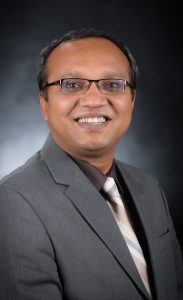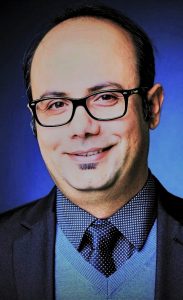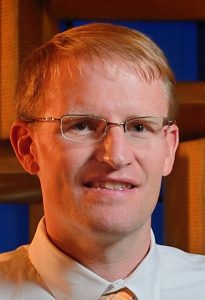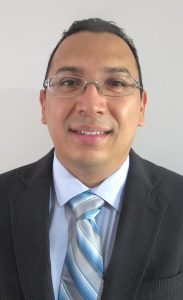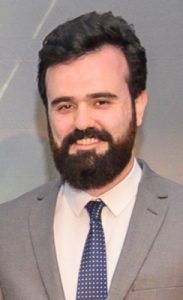Starting in August, five new faces will be among the faculty in the University of Mississippi School of Engineering.
Joining the Department of Mechanical Engineering are Samrat Choudhury, associate professor; and Meysam Heydari Gharahchesmeh, assistant professor. Nathan E. Murray, associate professor; and Byron S. Villacorta, assistant professor; will join the Department of Chemical Engineering. Amirarsalan Molan is the new hire as an assistant professor in the Department of Civil Engineering.
“Each of these professors brings his own unique professional expertise and teaching excellence to our students,” Dean Dave Puleo said. “We are grateful that they have chosen to join us and look forward to their continued success and achievements within their respective fields.”
Originally from India, Choudhury graduated with a master’s degree in metallurgy from the Indian Institute of Science at Bangalore and a doctorate in materials science and engineering from Pennsylvania State University. His expertise is in computational design of materials for energy applications.
“I believe the role of a teacher in the pedagogical triangle of teacher, student and science is that of a facilitator, who guides young minds to realize the science by themselves,” he said. “I am mindful that each student is different in scientific maturity, background, interest and motivation.”
Choudhury will teach EGR 313: Introduction to Materials Science this fall. He plans to develop courses related to Applications of Machine Learning in Materials Science and Advanced Manufacturing, and Computational Design of Materials. Beyond teaching, Choudhury also plans to develop a collaborative research program on machine learning-enabled advanced manufacturing with regional partners such as federal laboratories, industries and universities.
Choudhury’s past research has been recognized on several occasions, including a Young Leader Award from the Minerals, Metals & Materials Society, a major international materials society with more than 12,000 members from 70 different countries. More recently, he was selected for an Outstanding Early Career Faculty Award from the College of Engineering at the University of Idaho in 2020 for teaching, research and service.
He and his wife, Soma, have a son, Arya. Choudhury enjoys photography, playing music and traveling.
A native of Tehran, Iran, Heydari Gharahcheshmeh earned his bachelor’s degree from the University of Tabriz, master’s degrees from the University of Tehran and University of Texas at Brownsville, and his doctorate from the University of Houston. He conducted his postdoctoral work at the Massachusetts Institute of Technology.
Heydari Gharahcheshmeh specializes in texture and nanostructure of advanced functional materials and advanced conductors for energy and biocompatible device applications.
“I am incredibly interested in obtaining my faculty position at the University of Mississippi,” Heydari Gharahcheshmeh said. “There, I can contribute to its demand for materials science and engineering education and continue my research and professional service activities.”
Heydari Gharahcheshmeh will teach ENGR 313: Introduction to Materials Science and ENGR 312: Mechanical Behavior of Materials. His objectives are to teach and transfer fundamental knowledge using active learning methods to engage students, to use diverse question levels for homework and exams to improve the students’ critical thinking, and to design small-group projects to encourage students to develop teamwork and collaboration skills.
“My teaching philosophy is oriented toward expressing foundational concepts, developing problem-solving strategies and encouraging learning through collaboration,” he said.
Mentoring multiple undergraduate and graduate students who have gone on to work for high-tech companies such as Apple, Intel and Applied Materials is among Heydari Gharahcheshmeh’s most fulfilling achievements.
“I was also presented the Best Ph.D. dissertation award of the engineering college at the University of Houston in 2018,” he said. “For two years straight, I won the world award on applied superconductivity from the IEEE Council on Superconductivity Fellowship.”
Heydari Gharahcheshmeh enjoys hiking, running and playing soccer.
Born in Searcy, Arkansas, Murray attended Harding University and Oklahoma Christian University, receiving a bachelor’s degree in mechanical engineering from the latter in 2001. He attended UM, where he earned master’s and doctoral degrees in engineering science with emphasis in aeroacoustics.
Murray specializes in turbulence dynamics in complex systems and is an expert in the experimental study of unsteady flows and acoustics.
“As a research scientist with the National Center for Physical Acoustics, I routinely taught graduate courses in turbulence and aeroacoustics for many years and acted as the graduate program coordinator for aeroacoustics as well as teaching topics in fluid/thermal transport sciences,” said Murray, who also leads the high-speed aeroacoustics group within NCPA and is director for Mississippi’s NASA Space Grant Consortium.
“In my new role, I will continue teach topics in thermo-fluids including thermodynamics, transport phenomenon, mass and energy balances, and so forth. I also plan to continue teaching graduate courses in aeroacoustic topics.”
Murray’s short-term plan is to enhance the thermo-fluids focus in the department with hands-on and demonstration-based presentations of the course materials in his subject area. His long-term plan is to establish research opportunities in transient chemically reactive environments – understanding the role turbulence and acoustics have on combustion and reaction kinetics.
Murray and his wife, Carla, have three children: Henley, Julia and Landon.
Originally from El Salvador, Villacorta is an Australian citizen who lived in Brisbane, capital of the state of Queensland. He earned his bachelor’s degree from José Simeón Cañas Central American University, received his Ph.D. from Clemson University and has continued postdoctoral studies at the University of Queensland in the schools of Chemical and Mechanical Engineering.
Villacorta specializes in advanced materials processing, with a particular focus on functional nanocomposites, sustainable biocomposites and composite materials for harsh environments.
“I found in the chemical engineering faculty team a unique environment for collaboration, a family-like atmosphere and a dynamic fellowship among the faculty that captivated my mind,” he said. “My perception of the department, and of that of the School of Engineering, is like a combination of excellent weather and fertile ground where I can harvest my research and teaching aspirations and goals.”
Besides teaching core courses for the chemical engineering curriculum this fall, Villacorta is developing a graduate level course on polymer processing for spring 2022. Later, he hopes to develop a course on composite materials processing.
“One of my purposes as faculty is to become not merely a teacher, but a mentor capable of awakening in my students a desire for learning in the class and in the lab,” Villacorta said. “I deeply believe that keeping students motivated is a key component for an active learning process.
“Thus, my aim is to provide my students with well-rooted scientific-technical skills and the inspiration that will enable them to efficiently solve real-world problems.”
Among Villacorta’s notable professional achievements are the development and patenting of materials and processes which have had a commercial impact upon Australian and American industry. He has attracted AU$ 2.4 million in research funding in the last four years and has been a principal investigator for two successful Australian Research Council Linkage Project Grants.
Villacorta and his wife, Sara, have two sons, Byron and Victor. His hobbies include reading historical and theological sources, and practicing Kenpo, a form of martial arts.
A native of Tehran, Iran, Molan received his bachelor’s and master’s degrees from Azad University and a doctoral degree from Wayne State University. He specializes in traffic operation analysis, alternative intersections, highway safety, traffic simulation modeling, and pedestrian and bicycle safety.
“From the very first interview, I noticed that I will meet and collaborate with great colleagues at Ole Miss,” Molan said. “All the people who interviewed me were behaving so nicely and professionally. I searched online and I found out that I will also meet and collaborate with great students.”
Molan will teach CE 481: Transportation Engineering I and CE 417: Construction Engineering and Management. He also plans to develop a new course related to transportation simulation modeling.
“My short-term plan is to build an appropriate framework for my classes to make sure that students would learn important concepts related to transportation very well,” he said. “Then, those students will be my teammates (collaborators) to conduct great research studies together.”
Molan said he believes teaching is the apex of the human endeavor because it provides an opportunity to shape the next generation.
“I have learned of the importance of the affective domain and try to create a comfortable and respectful atmosphere in the classroom so that students feel invited to participate in discussions,” he said. “To achieve this goal and gain the students’ trust, I occasionally supplement class material with transportation-related examples from popular culture, such as video games, music and movies.
“Albert Einstein said it this way: ‘It is the supreme art of the teacher to awaken joy in creative expression and knowledge.'”
He has published more than 40 peer-reviewed articles in prestigious journals and conference proceedings, including an article published in the ASCE Journal of Transportation Engineering: Part A, which received the Best Paper Award winner for 2018.
Molan’s family includes his parents, two older brothers, two sisters-in-law, a niece and a nephew. His hobbies are tennis and volleyball, playing electric guitar, listening to music and watching movies.
